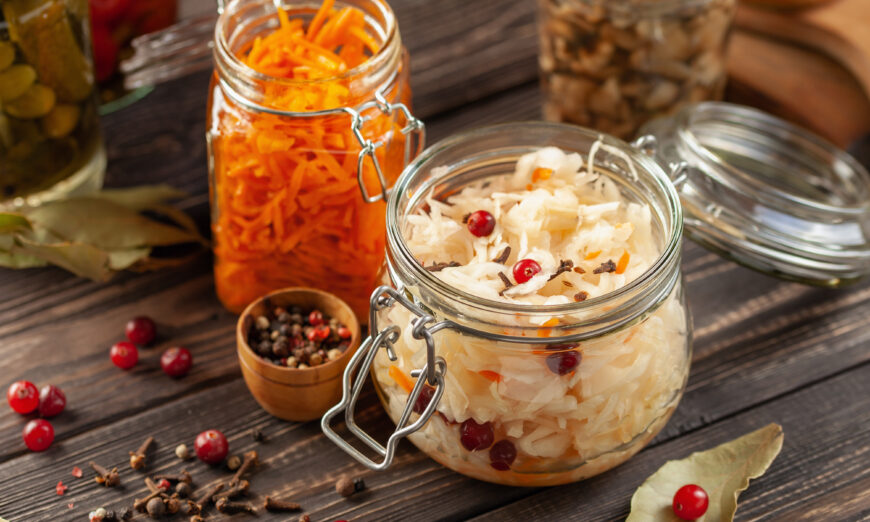The Universal Appeal of Lacto-Fermented Food
- LKY
- Mar 17, 2023
- 3 min read

from The Epoch Times
March 16, 2023
We live in interesting times, and one of the most interesting transformations that we have seen during the past forty years has occurred in the field of biology: a huge paradigm shift from the notion that germs attack us and make us sick to the realization that germs are our friends.
Human beings can have up to five pounds of bacteria in their guts, and if these bacteria are friendly, they play many important roles in aiding digestion, producing vitamins, protecting us against toxins and pathogens, and even producing feel-good chemicals. It’s estimated that up to 80 percent of our immune system comes from beneficial bacteria in the digestive system.
These days lots of folks are taking probiotic pills to help populate the gut with these friendly critters … but how did our ancestors get their beneficial bacteria? They ate fermented food—full of friendly bacteria producing lactic acid and supporting good health in a myriad of ways.
Every traditional culture produced one or more fermented foods that were consumed on a regular basis—there are no exceptions to this rule. From sauerkraut in European cultures to delicate pickles in Asian cuisines, fermented poi, and fish products in Polynesian cultures, hundreds of varieties of fermented milk, naturally cured salami and other forms of charcuterie, and “rotten” fish prized by the Inuit peoples of the Arctic—these foods were valued as necessary for good health.
By far, the greatest experts in fermentation were the African tribal peoples, who figured out how to ferment almost everything—maize, millet, sorghum, bananas, and watermelon juice serve as the substrate for sour beverages—in the case of sorghum, a variety of fermented breads and porridges; peanuts and sesame seeds form the basis of fermented press cake; fermented cassava is a staple throughout Africa; and meat, organ meats, caul fat, intestines, and even bones are fermented in a variety of ways, often to make sausage-like products or sauces.
Fermentation by lactic acid-producing bacteria serves to preserve food, of course, but there are other benefits. Levels of vitamins increase in the foods being fermented, while naturally occurring toxins and irritants are neutralized. But most importantly, fermented foods provide beneficial bacteria on a daily basis. Some have objected that live bacteria cannot get past the strongly acidic environment of the stomach—however, these tiny organisms have complex strategies for surviving this acid trip.
In addition to naturally fermented dairy products such as yogurt, kefir, and raw cheese, a serving of sauerkraut as a condiment to a cooked meal can help with digestion and boost your gut flora. Look for artisan sauerkraut that has not been heated or pasteurized. Only in raw sauerkraut will the organisms be alive and thriving—and the low pH keeps pathogens at bay. In fact, lacto-fermented foods are some of the safest foods you can eat.
Better yet, make your own! It’s easy to do because there is a lot of lactic acid in cabbage juice. (Fermentation of other foods, like beets, tomatoes, or peppers may require a culture to ensure successful proliferation of lactic-acid bacteria rather than spoilage or alcohol-producing bacteria.) Be sure to use plenty of salt as lactic-acid bacteria thrive in a salt brine.
Homemade Sauerkraut
For equipment, you will need a quart-sized wide-mouth mason jar and a wooden pounder. Ingredients should be organic and the salt unrefined.
1 organic cabbage
2 tablespoons unrefined salt
1 tablespoon seasoning such as peppercorns, caraway seeds, or celery seeds
1 teaspoon red pepper flakes (optional)
Remove the outer leaves from the cabbage, cut lengthwise into quarters, and remove the core. Slice thinly, either by hand or using a food processor.
Place cabbage in a large bowl and toss with salt and optional seasonings. Then pound with the wooden pounder and press down to remove the juice from the leaves. Cover the bowl with a towel. Repeat the tossing, pounding, and pressing procedure several times, at one-hour intervals.
When the cabbage looks limp, stuff it into the jar using the pounder. Push it down so that the juice covers the cabbage. With enough pressing, you should be able to stuff the whole cabbage into the jar. The top of the cabbage should be about 1 inch below the top of the jar—no higher—and covered with juice.
Put the lid tightly on the jar and leave at room temperature for two days. Remove the lid and let the sauerkraut “burp.” Replace lid, and store in the refrigerator for three weeks before eating. Sauerkraut may be kept in the refrigerator with all its goodness intact for at least six months.

Comments